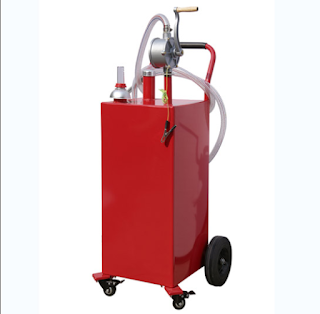what are the symptoms of a bad oil pump?
The oil pump plays a critical role in the proper functioning of an engine by ensuring adequate lubrication and preventing friction-related damage. When an oil pump malfunctions, it can lead to detrimental consequences for the engine's performance and longevity. In this article, we will explore the common symptoms of a bad oil pump, helping vehicle owners and enthusiasts recognize the signs of potential problems and take timely action.
Low Oil Pressure:
One of the primary indicators of a faulty oil pump is low oil pressure. If the oil pump fails or becomes worn out, it may not generate enough pressure to circulate oil effectively throughout the engine. As a result, the oil pressure gauge on the dashboard may display lower than normal readings. Consistently low oil pressure can lead to inadequate lubrication, potentially causing engine damage over time.
Engine Noise:
A bad oil pump can contribute to abnormal engine noises. Insufficient oil pressure may result in metal-to-metal contact and increased friction between moving engine components. This can lead to loud knocking or tapping sounds emanating from the engine. If these noises become persistent, it is crucial to have the oil pump inspected and repaired promptly to prevent further damage.
Warning Lights:
Modern vehicles are equipped with oil pressure warning lights or indicators on the instrument cluster. When the oil pressure drops below a safe threshold, the warning light illuminates, alerting the driver to a potential oil pump issue. If the oil pressure warning light activates or remains illuminated while driving, it is essential to address the problem promptly to prevent engine damage.
Overheating Engine:
A malfunctioning oil pump can contribute to engine overheating. Inadequate oil circulation leads to reduced lubrication and inefficient heat dissipation, causing the engine temperature to rise. If the engine consistently runs hot or frequently overheats, it is necessary to inspect the oil pump along with other cooling system components to identify and rectify the underlying issue.
Increased Engine Wear:
Insufficient oil supply due to a failing oil pump can result in increased engine wear and tear. Lubrication is vital for minimizing friction and preventing excessive heat buildup within the engine. When the oil pump fails, critical engine components may not receive adequate lubrication, leading to accelerated wear, decreased engine performance, and potential failure if left unresolved.
Drop in Oil Level:
A malfunctioning oil pump may contribute to a noticeable drop in the oil level on the dipstick. If the pump fails to circulate oil properly, it may result in oil consumption or leakage. Regularly monitoring the oil level and observing a significant decrease without any visible leaks can indicate a problem with the oil pump.
Conclusion:
Recognizing the symptoms of a bad oil pump is crucial for maintaining the health and longevity of an engine. Low oil pressure, engine noise, warning lights, overheating, increased engine wear, and a drop in oil level are all potential indicators of a faulty oil pump. If any of these signs manifest, it is advisable to consult a qualified mechanic or automotive professional to diagnose and address the issue promptly. Timely action can help prevent further engine damage and ensure the smooth operation of the vehicle.

评论
发表评论